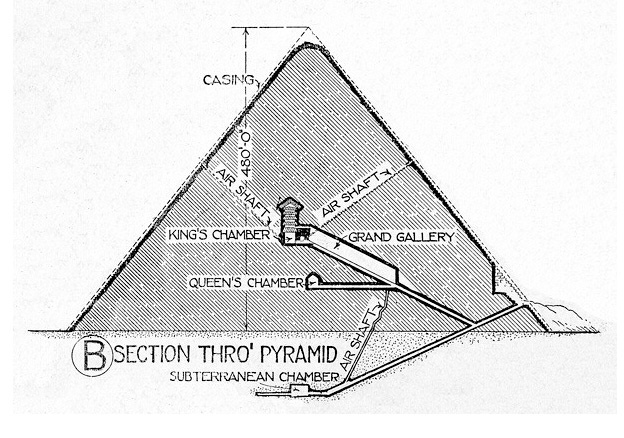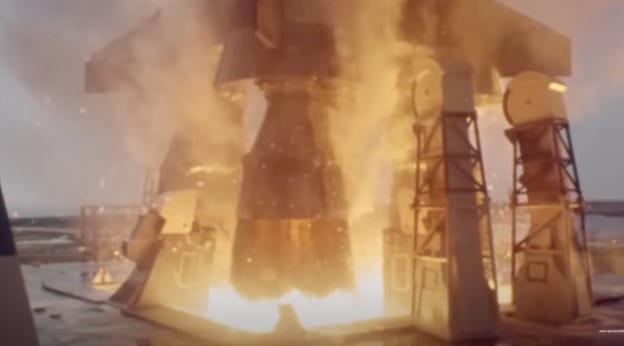In the early 1970’s, astronomer Thomas Brophy traveled to a spot in the south west of Egypt in the Libyan direction. Far from any city or town, he joined a team of archeologists in evaluating a site which had come to be known as Nabta Playa.1 What is interesting here with respect to Dr. Brophy and the site was the fact that a trained astronomer and physicist was evaluating the site. In other words, his was a cross-disciplinary project, and it yielded some fantastic insights about what some of the ancients had already known.
Cross-discipline research brings two entire tool sets to the evaluation of a subject, presenting many more opportunities for insight.
A later and more famous example is that of engineer Christopher Dunn, who, in his inspired and multi-decade analysis of the Great Pyramid, has succeeded in eventually reaching even the minds of Egyptologists. His first Book, The Giza Power Plant2, took to the great structure the understanding of machines and how they operated. The results and his great degree of caution opened doors for later scholars to “riff” on his work.
Just recently, Mr. Dunn has updated this book with his third book: Giza: The Tesla Connection.3 The work reviews the latest findings of Mr. Dunn and a self-organizing group of pyramid researchers, one of whom has even gone as far as to create analogues of the pyramid machine components in his backyard.
In the book, Mr. Dunn carefully evaluates the so-called Queen’s Chamber. Put simplistically, the Pyramid has four basic “floors.” There is the missing capstone at the top, the so-named King’s Chamber below it, and under that the Queen’s Chamber, and lastly components in the basement. While this vastly oversimplifies the Great Work, it is enough information to serve us.
Mr. Dunn identifies how the Queen’s Chamber has several complex shafts running above and away, and also heading below. He describes how these appear to be chemical supply shafts that delivered hydrogen upstairs to the King’s Chamber for further processing.
The King’s Chamber also has strange shafts that run from it to the surface of the Pyramid. Put country simple, the thing has a fuel pump in the basement and exhaust vents near the motor upstairs in the so-called King’s Chamber.
Mr. Dunn well-describes how his posited process for releasing hydrogen into the King’s Chamber might have operated, and while it is persuasive, more work needs to be done to gather more support.
What vexes me about his idea is that it does not seem like enough energy to power what the Pyramid was apparently capable of doing. In my view, how much energy the pyramid generated is perhaps the most important question about it. Such a number will define its scope of operation and also its purposes more than any other single factor.
Another pyramid author, Joseph P. Farrell, has introduced both argued speculation and textual evidence that the pyramid was a weapon of fantastic proportions. While in our modern arrogance we have been trained to discount or disregard ancient texts as myth and superstition, a careful reading of these texts in academic translation supports Dr. Farrell’s analysis.
Mr. Dunn is cautious in his views . But by his introducing Tesla, he winks at the weapon hypothesis as Tesla himself asserted on multiple occasions that his inventions could be weaponized. Which means, in my initial opinion, that the amount of energy likely to be produced by the Queen’s Chamber would not have been enough to support its full operation. But that’s not a problem because it did not need to. Mr. Dunn points out that the vibrational structure of the Pyramid allowed it to collect the Earth’s natural electricity.
I think that one of the challenges of the analysis of the Pyramid is our natural habit to think of a device with a single set of operating dynamics. But what if the Pyramid had more than one, or three or even more dynamic states? Future work will flesh out how likely this is.
The state of mixing chemicals and releasing hydrogen from the Queen’s Chamber up to the King’s Chamber was just the first stage of operation.
I began to search my memory and think about whether there were other examples of multi-dynamic devices that used one mode to get going and then another to operate, silly me first thought of a lawn mower with its choke switch, changing the fuel-air mix to enable easy starting. But soon another machine occurred to me: The Saturn 5 F1 Engine.
Full Video: Saturn 5 F1 Engine Start Sequence
(Kudos to Mark Gray for his work in bringing this to us.)
One of the key insights of the ex-Nazi scientists who designed the V2 and V3 rockets was the need for a two-stage motor. One motor is needed to supply the fuel to the main one. For the Saturn 5 F1, this was done with a small turbine using fuel which would burn immediately upon contact with the air, called “hypergolic” fuel. This first little turbine spins up and creates the pressure necessary to deliver large amounts of the special kerosene needed to fire the main engine. You can see this hypergolic fuel on the above video as the darker fuel on the sides of the motor. The bright white exhaust in the center is the kerosine and oxygen. (The hypergolic fuel is vented along the sides of the motor because it burns cooler and protects the motor from the kerosene burn. )
The red box in the above diagram shows the “starter” engine used to power the pumps needed to drive a rocket motor.
I think that a Tesla engineering Great Pyramid team would need a mechanism to get the device going. The Queen’s Chamber seems like it. After that, some self sustaining process would take over to power the main device. What a crazy scene it must have been when that thing was going. The ancients referred to it as “The Sound Eye”. Can you imagine the largest building on Earth humming at full power, especially after seeing the “tiny” Saturn 5 launch?
For more information on the amazing crazy of Nabta Playa, See Grid of The Gods: The Aftermath of The Cosmic War and The Physics of The Pyramid Peoples, by Joseph P. Farrell, PhD, and Scott de Hart, PhD, Adventures Unlimited Press, 2011. And also Thomas G. Brophy, Phd, The Origin Map: Discovery of a Prehistoric, Megalithic, Astrophysical Map and Sculture of The Universe, New York, Writer’s Club Press, 2002.
The Giza Power Plant, Christopher Dunn, Bear and Company, Vermont, United States, 1998.
Giza: The Tesla Connection, Bear and Company, Vermont, United States, 2024








Dr. Joseph P. Farrell!.....a brilliant, brilliant, BRILLIANT man!
I recommend ALL of his books......since they are ALL connected. EVERYTHING is CONNECTED!!
Dr. Farrell is out there, on video.....his own, as well as being a guest on many people's shows/podcasts.
It's QUITE the EDUCATION!